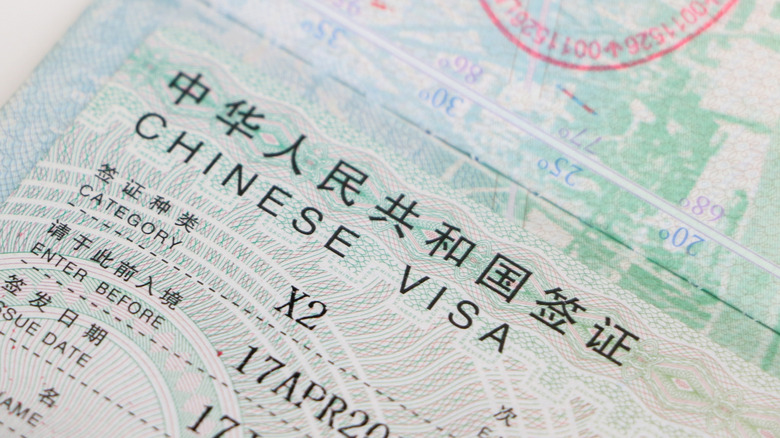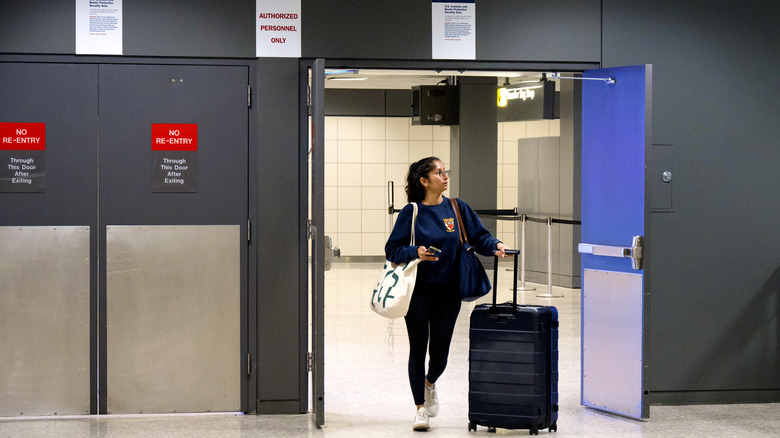Do You Need A Visa To Travel To China? What Tourists Should Know About Its Visa-Free Policy
Traveling the world for an extended period of time is a bucket list item for many. One can only dream about visiting continents, such as Europe or Asia, but long-term stays and sometimes even short-term stays (depending on where you go) require documentation, and the process can be tedious. Some places, like China, are enticing tourists with more leniency on short-term visas for Americans, making the most of your worries about deciding when to vacation and when not to vacation in China. So, do you need a visa to enter China, even just for a day? The simple answer is "no" ... under certain conditions.
Travelers can apply for the Tourist Visa (L-Visa), where you submit proof of your travel plans, passport, an invitation letter, etc. (via Chinese Visa Application Service Center). However, if you're not staying long, China initially allowed Americans to be visa-free when transiting through the country. Now, according to the Embassy of the People's Republic of China in the United States, the National Immigration Administration (NIA) extended transit visas from 72 hours (3 days) or, destination-dependent,144 hours (6 days) to 240 hours (10 days) across the board as of December 2024. These are only transiting visas, so you must be "passing through" China to a third country or region. The NIA added over 20 ports to the already allowed visa-free entry spots, giving you more options to choose from (as long as you abide by the rules, of course).
A closer look at the rules for China's new visa-free policy
Visa information is usually jam-packed, jumbled, and quite confusing. From the duration of time to where you can travel, the amount of knowledge you need before you can enter a country like China can be daunting.
The visa-free policy for Americans is a transit visa, which means exactly what it sounds like. You must be transiting through the country to get to another destination, or you will need a tourist visa. So, you'll need proof of your onward travel plans, as per International Services Shanghai. You can think of it like an extended layover.
The old visa-free policy was restricted to the province or city you entered, only allowing you to stay there. Now, with 60 ports of entry included, the NIA made the visa a bit more flexible. You can travel within the selected list found on the Embassy of the People's Republic of China in the United States website. You have time to do so, as well, as the countdown starts as soon as you cross the port of entry. To travel within each place, you must have a valid American passport, confirmed connecting travel documents, and an arrival card (filled out upon arrival in China, which proves you're on a foreign transit visa). That's it! When you break it down, it doesn't seem as scary. It may not be a country where getting citizenship is just as simple, but we'll stick to the loophole on how to just visit for now.
Why is China being more lenient on the visa requirements?
During a time in the U.S. where it seems like international travel is becoming more restrictive, it makes you wonder why Chinese Immigration is loosening its grip on how long they let foreigners into their country. One word: Coronavirus. The economy in China took a massive hit during COVID-19, and the NIA is taking notice from the Central Economic Work Conference to promote monetary interactions between the Chinese and foreigners.
Hong Kong University tourism professor Benjamin Iaquinto told CNN that he believes this will show visitors that despite China's COVID lockdowns, the country has opened back up. Iaquinto said that he believes this will significantly help the Chinese economy. It's true. This visa-free policy has enticed foreigners to go to the country. The number of inbound visitors increased by over 120% (via Xinhua).
So, if you're thinking about an Asia trip, you may want to transit through China and add to the positive statistic. Want to travel to Europe too? Check out our up-to-date information on European travel visa requirements.


